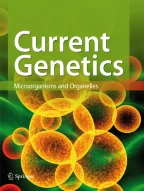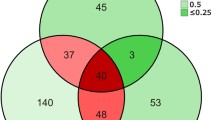
Cadmium is a highly poisonous metal and a human carcinogen, but the molecular mechanisms underlying its cellular toxicity are not fully understood. Recent findings in yeast cells indicate that cadmium exerts its deleterious effects by inducing widespread misfolding and aggregation of nascent proteins. Here, we discuss this novel mode of toxic heavy metal action and propose a mechanism by which molecular chaperones may reduce the damaging effects of heavy metal ions on protein structures.

Avoid common mistakes on your manuscript.
Human exposure to toxic metals and metalloids is increasing in many parts of the world due to geochemical contamination and industrial pollution. The heavy metal cadmium is considered genotoxic and neurotoxic, and exposure is associated with lung and kidney cancers. In addition, cadmium may be implicated in the progression of neurological disorders caused by protein misfolding (Chin-Chan et al. 2015; Maret and Moulis 2013; Tamás et al. 2014; Wang and Du 2013). At the cellular level, cadmium has been reported to affect redox homeostasis, interfere with the homeostasis of essential metals, cause DNA damage, impair DNA repair mechanisms, and perturb protein function and activity. At the molecular level, these toxic effects of cadmium have up to now been attributed mainly to its interactions with metalloproteins or other susceptible proteins (Bertin and Averbeck 2006; Beyersmann and Hartwig 2008; Maret and Moulis 2013; Tamás et al. 2014; Wang and Du 2013). Examples of cadmium binding to native, i.e., folded proteins, are abundant in the literature; however, most of these studies have used purified proteins and in vitro binding assays (Maret and Moulis 2013) and the importance of this mode of action for cellular toxicity has remained unclear. Recent findings in yeast cells indicate that cadmium exerts its deleterious in vivo effects by inducing widespread misfolding and aggregation of nascent proteins (Jacobson et al. 2017).
To perform their functions in the cell, most proteins must first fold into a defined three-dimensional structure, their native conformation. Misfolded proteins are not only inactive but also cytotoxic, as they may aggregate and/or interact inappropriately with other cellular components. Numerous pathological conditions are associated with protein misfolding and aggregation including several neurodegenerative diseases and age-related disorders, such as Alzheimer’s and Parkinson’s disease. To protect themselves against the harmful accumulation of protein aggregates, cells use an array of protein quality-control mechanisms. Molecular chaperones assist the folding of proteins into their functional conformation or help misfolded proteins to regain their native structures. Moreover, molecular chaperones are integral parts of protein degradation systems that clear cells from misfolded and aggregated protein conformers such as the proteasome, the autophagy pathway, and the lysosome/vacuole (Goloubinoff 2016; Hipp et al. 2014; Tyedmers et al. 2010).
We have previously demonstrated that cadmium strongly inhibits the refolding of chemically denatured proteins in vitro at concentrations that affect native, i.e, completely folded, proteins only to a minor degree (Sharma et al. 2008). Prompted by this finding, we investigated whether cadmium would affect protein folding also in living cells. Using the yeast Saccharomyces cerevisiae as model system, we demonstrated that cadmium induces misfolding and aggregation of nascent proteins (Jacobson et al. 2017). In vivo and in vitro data furthermore indicated that cadmium-aggregated protein species may form seeds that, in a gain-of-function mechanism, increase the misfolding and aggregation of other sensitive proteins. In addition, we found that zinc protected nascent polypeptides from cadmium-induced aggregation, raising the possibility that cadmium may displace zinc in metalloproteins and form complexes with alternative ligands. Zinc not only prevented cadmium-induced protein aggregation but also improved the cadmium tolerance of yeast cells. Similarly, yeast mutants with reduced capacity to protect the proteome from cadmium-induced aggregation or to clear the cytosol from protein aggregates proved more sensitive to cadmium than wild-type cells (Jacobson et al. 2017). Together, these results suggest that misfolding and aggregation of nascent proteins represent an important component of cadmium toxicity.
Like cadmium, arsenite (As 3+ ) (Ibstedt et al. 2014; Jacobson et al. 2012) and chromium (Cr 6+ ) (Holland et al. 2007) also cause protein aggregation in yeast cells. Whilst arsenite and cadmium directly interfere with protein folding (Jacobson et al. 2012, 2017), chromium triggers protein aggregation by enhancing mRNA mistranslation. Mistranslation appears to be the primary cause of cellular toxicity by chromium (Holland et al. 2007). In contrast, neither cadmium (our unpublished data) nor arsenite (Jacobson et al. 2012) cause mRNA mistranslation to any major extent.
Cells possess a number of subcellular deposition sites where misfolded proteins may be stored or processed (Miller et al. 2015; Saarikangas and Barral 2016). Whether metal-induced protein aggregates are sequestered to such sites remains to be investigated.
Cadmium and other heavy metal ions can bind to the S, N, and O atoms of proteins, forming relatively weak monodentate as well as much more stable pluridentate complexes. The most important ligands of the metal ions are the thiol groups of cysteine residues, the imidazole groups of histidine residues, and the carboxylate groups of acidic amino acid residues. The dissociation constants of pluridentate complexes, as metalloproteins form them with their specific essential metal ions, approximately correspond to the product of the dissociation constants of the individual monodentate complexes of their ligands (Table 1). The complexes in metalloproteins show mostly a tetrahedral or octahedral geometry with four or six ligands, respectively (Gurd and Wilcox 1956; Kägi and Hapke 1984; Vallee and Ulmer 1972).
We have previously shown in vitro that during mild heat-denaturation, trace amounts of an aggregation-prone protein acted as proteinaceous infectious seeds that could dramatically accelerate the misfolding of another less thermolabile protein in excess. Remarkably, the presence of an active unfolding/disaggregating chaperone system, that effectively neutralized the seed formation, could optimally prevent seed-induced aggregation of the less labile abundant protein species (Ben-Zvi and Goloubinoff 2002). A similar seed neutralization effect by human Hsp70–Hsp110 chaperones was also observed with α-synuclein seeds causing protofibril formation in vitro, as in Parkinson’s disease (Finka et al. 2016). These observations raise the possibility that even low sub-toxic levels of heavy metals or metalloids in cells might trigger prion-like infectious propagations of toxic aggregates. Such aggregates might remain inconsequential in young tissues in which disaggregating and unfolding chaperones maintain the cellular concentration of seeds below the threshold for effective prion-like propagation. In aging cells, however, in which cellular levels of HSP chaperones are known to decrease (Ben-Zvi et al. 2009; Goloubinoff 2016; Shemesh et al. 2017), low levels of heavy metals might suffice to cause cell death. It is tempting to speculate that cells in aging tissues that fail to accumulate enough chaperones will also fail to counteract the formation of aggregation seeds (Fig. 1; right path), implying that even low concentrations of heavy metal ions taken in youth, might become toxic with age and initiate degenerative diseases associated with protein misfolding.
Our recent studies in yeast cells have demonstrated that cadmium (Jacobson et al. 2017) and arsenite (Jacobson et al. 2012) severely interfere with the folding of nascent proteins and thus reduce cellular viability. As indicated by in vitro experiments (Sharma et al. 2008), heavy metals and metalloids other than cadmium and arsenite also perturb protein folding and likely manifest their toxicity through similar mechanisms. The clinical symptoms of acute and chronic metal poisoning are often vague with few metal-specific features. This rarity of metal-specific manifestations might reflect the interference of metal ions with the folding of a multitude of proteins as well as the consequences of the inactivation of chaperones and other repair systems that will again affect a multitude of misfolded proteins. To better appreciate the toxic and pathogenic effects of poisonous metals, detailed molecular understanding is required regarding the mechanisms by which they interfere with protein folding and promote protein aggregation in vivo, how such aggregates impair cellular functions, and how cells regulate the protein quality-control systems to protect against aggregate toxicity. Such knowledge may be expected to contribute to the development of new strategies for both disease prevention and treatment of metal poisoning.
We apologize to colleagues whose research could not be cited due to length restrains. Markus J. Tamás acknowledges the Swedish Research Council and the foundation Åhlén-stiftelsen for support. Pierre Goloubinoff acknowledges the Swiss National Science Foundation and the Swiss State Secretariat for Education Research and Innovation for support. We wish to dedicate this review to Pal Tamás (1923–2017).